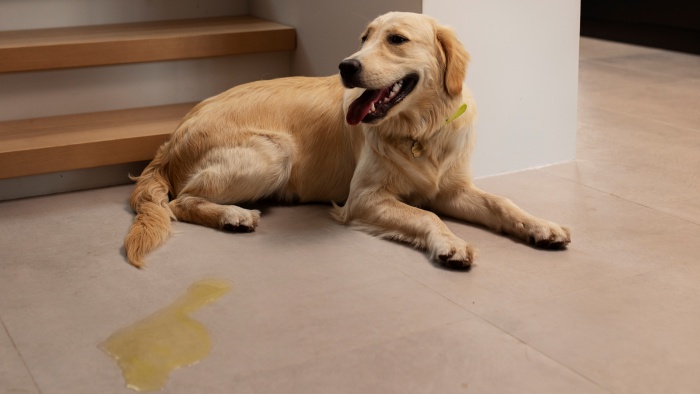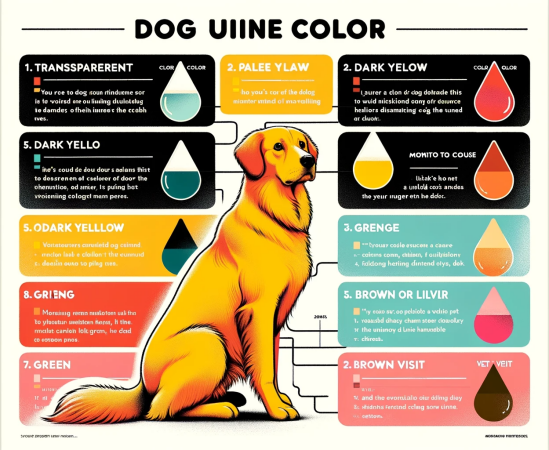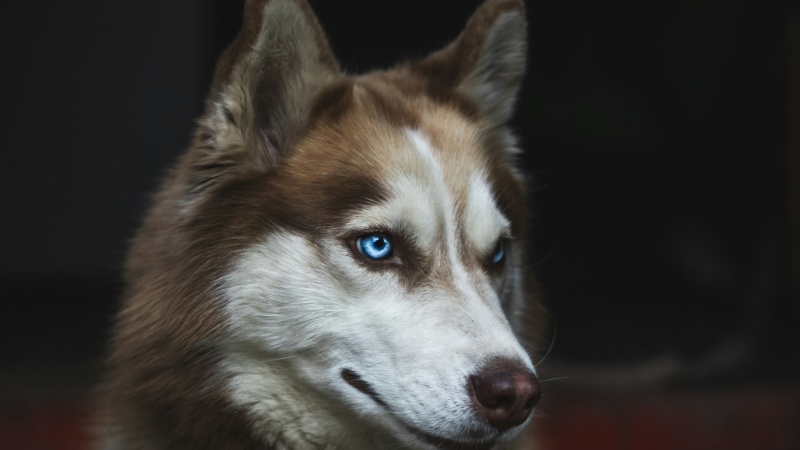
Best Doggie Doorbell:15+ Models Tested for Potty Training
Are you training your doggie doorbell manners, or does your furry friend incessantly scratch or bark at the door to go outside? You need a

When it comes to dog pee, much like humans, the urine of animals is a vital health indicator. Just as human urine reveals a lot about our health, dogs’ urine color and characteristics can change, signaling potential health issues. Changes in urine color in dogs are primarily due to health problems or inadequate hydration.

A dog urine color chart can be an invaluable tool for simplifying this process. It clearly shows the various urine colors, their possible causes, and potential treatments, making it easy for pet owners to understand their dogs’ health. If you notice an unusual color in your dog’s pee, this chart can help you decide what steps to take next.
The color of dog urine can vary, showing a spectrum from clear to deep yellow and even black. Unusual colors like green may also appear.
Below, in the chart of dog urine colors, we’ve organized the shades from lightest to darkest. This arrangement helps in identifying the range of colors that dog urine can present.


When your dog’s urine is clear, it may mean excessive water consumption or that he’s unable to properly filter out toxins due to kidney or liver conditions.
If your dog is excreting transparent urine, he might be overhydrated, and reducing his water intake could help achieve a pale yellow shade. If clear urine persists after reducing water consumption, a vet consultation and urine testing are advisable.
A pale yellow hue is the benchmark for healthy canine urine, signifying optimal health, absence of disease, and proper fluid balance.
Yet, even with pale yellow urine, regular monitoring is prudent to ensure this color remains consistent. Any sustained shift from pale yellow warrants veterinary advice to rule out any health anomalies.
Deep yellow urine in canines often points to inadequate hydration. With insufficient water, urine darkens as the concentration of urea increases. If dark yellow urine does not lighten with increased hydration, then renal or hepatic issues may be present. Ensure your dog isn’t losing fluids due to other health problems like diarrhea, which can also cause dark yellow urine.
Brown to black dog urine can stem from various issues, with damaged red blood cells being a common cause. This damage releases haemoglobin, which can darken urine. Myoglobin from muscle injuries can have a similar effect.
Additional causes for dark dog urine include dehydration, internal bleeding, toxic exposure, muscle damage, or liver conditions. Brown or black urine is a veterinary emergency and immediate medical attention is necessary.
Orange urine in dogs usually indicates jaundice or other liver and pancreatic diseases. Medications can also result in an orange tint. Accompanying symptoms of these conditions should prompt an urgent vet visit.
Reddish dog urine is often due to bleeding. It may also indicate bladder inflammation, urinary issues, kidney disease, or other serious conditions. Dietary causes, like beet ingestion, can also alter urine color temporarily.
Persistent red urine, beyond 24 hours, necessitates a vet examination to exclude serious health concerns.
Green urine in dogs is alarming and suggests potential severe liver, gall bladder, or kidney issues, demanding prompt veterinary care.
Dietary factors, such as excessive grass consumption, can also impart a greenish hue to dog urine. However, if this coloration persists, a vet evaluation is crucial.
The aforementioned dog urine color chart highlights insufficient water intake as a primary reason for changes in urine color. Addressing hydration can rectify many issues, yet it’s crucial to distinguish that a healthy dog’s urine should be pale yellow, not clear. It’s essential to determine your dog’s daily water needs prior to increasing his intake.
With a clear understanding of your dog’s hydration requirements, here are strategies to enhance water consumption:
Engage your dog in regular physical activities to induce thirst. Following exercise, offer a generous bowl of water. This can prompt your dog to drink more than the amount lost during the activity.
Incorporate wet dog food into his diet, as it contains more moisture than dry kibble. Alternatively, you can moisten dry food with water, but be cautious to not deter your dog’s appetite.
Introduce flavored liquids if your dog hesitates to drink plain water. This not only hydrates but also provides additional nutrients. Be mindful of the sugar content to avoid the risk of weight gain.
Fruits, abundant in water, can be both hydrating and appealing to your dog. Ensure the fruits are dog-safe and opt for those with high water content, like watermelon.

For gradual rehydration, offer ice cubes for your dog to lick. Enhance the appeal by incorporating flavors from his preferred treats.
If other techniques fail, consider using a syringe to gently administer water directly into your dog’s mouth.
Reflecting on the need for hydration as indicated by the dog urine color chart, it’s often necessary for vet visits to involve urine samples. In anticipation of this, here’s an efficient approach to collect your dog’s urine.
Utilize the ‘free-catch method,’ which involves placing a clean container under your dog mid-stream as he urinates, then transferring the urine to a jar. This method, while convenient, does not guarantee a sterile sample due to potential contamination as urine contacts the urethra and genital area. For a more sterile sample, cystocentesis is an alternative, which involves a vet obtaining urine directly from the bladder, though this technique is more intricate and best performed by professionals.
The morning’s first urine is ideal for sampling due to its concentrated nature, providing a rich source of data. Immediately freeze the sample to inhibit bacterial proliferation and keep it frozen until your visit to the vet.
To successfully obtain the sample, training your dog to signal when he needs to urinate, such as using a bell system, can be highly effective.
Besides the color variations indicated by the dog urine color chart, these symptoms suggest your dog’s urine may indicate health issues:
Should your dog show difficulty urinating, applying excessive effort, or merely producing dribbles, it could signal a urinary tract blockage. This might be due to bladder stones, tumors, strictures, clots, or inflammation. Pain could be severe, and immediate veterinary care is essential.
A dog that leaks urine could be battling a urinary infection or possibly bladder stones. This is more common in very young or elderly dogs. Urine leakage is not just an issue for your floors but a significant health concern that requires medical attention.
If your dog is urinating more frequently than normal and it’s not related to increased water intake or environmental changes, it may indicate a urinary tract infection or even kidney or liver dysfunction.
Several factors can lead to a reduction in urine output, such as dehydration, heat exposure, diabetes, bladder issues, or diminished kidney blood flow.
Contrary to common belief that clear urine signifies health, the ideal canine urine color is pale yellow, indicating a well-hydrated, healthy dog. It may also be referred to as straw yellow, amber, or clear yellow.
For precise assessment, collect the urine in a transparent container and examine it against a white backdrop.

Kidney failure in dogs often results in darkened urine which may contain blood, along with altered urine volume.
Typically, slight cloudiness is normal, but increased murkiness could signal an infection, presence of crystals, mucus, or debris. Conditions like bladder stones or prostate issues can also cause milky urine.
In female dogs, this can occur during estrus due to vaginal mucus mixing with urine. In males, sperm can increase urine viscosity. Lipids can also make urine thicker but are usually not worrisome unless accompanied by color changes.
Sticky urine might indicate glucosuria, where the urine sugar level is high, potentially signifying diabetes or renal problems. A vet check is advisable if the urine is sticky and has an unusual odor.
Darker morning urine is normal due to reduced water intake during prolonged sleep at night. It should lighten pale yellow after your dog hydrates during the day.
UTI can make a dog’s urine cloudy or dark and strong-smelling. Inflammation from the infection may cause the urine to appear pink or red.
Combining consistency with positive reinforcement is key. Establish a routine, use a command, and reward your dog immediately after they urinate outside to encourage this behavior. If accidents happen indoors, clean them without punishment to avoid negative associations.
Understanding the nuances of dog pee color can give you invaluable insights into your furry friend’s health.
Remember, pale yellow is the golden standard, indicating proper hydration and health. If your dog’s urine deviates from this color, it’s a cue to assess their water intake or to consider a vet visit for further evaluation.
Whether it’s ensuring adequate hydration, learning how to collect a urine sample, or recognizing signs of urinary distress, each step is crucial in maintaining your dog’s well-being. Engaging in regular exercise, offering a moist diet, and being observant of changes in urination habits all play a part in proactive pet care.
So, as you integrate these tips into your routine, have you noticed any changes in your dog’s pee that sparked action? How do you ensure your dog stays hydrated? Share your experiences and tips below—your insights could be a beacon for fellow dog owners navigating similar challenges.


Are you training your doggie doorbell manners, or does your furry friend incessantly scratch or bark at the door to go outside? You need a

Noticed your dog yawn more often than usual? While it’s adorable, it could also be a sign of something to consider if it appears excessive.

Wondering what’s so fantastic about bell train a dog? Picture a world where your furry friend always alerts you when they need to go outside,

A potty doorbell is essentially a bell placed near your entrance that your dog can ring to indicate her need to go potty. No matter

Are you training your doggie doorbell manners, or does your furry friend incessantly scratch or bark at the door to go outside? You need a

When it comes to dog pee, much like humans, the urine of animals is a vital health indicator. Just as human urine reveals a lot

Noticed your dog yawn more often than usual? While it’s adorable, it could also be a sign of something to consider if it appears excessive.

Wondering what’s so fantastic about bell train a dog? Picture a world where your furry friend always alerts you when they need to go outside,
Copyright © 2024 doggydogdoorbell. All Rights Reserved.